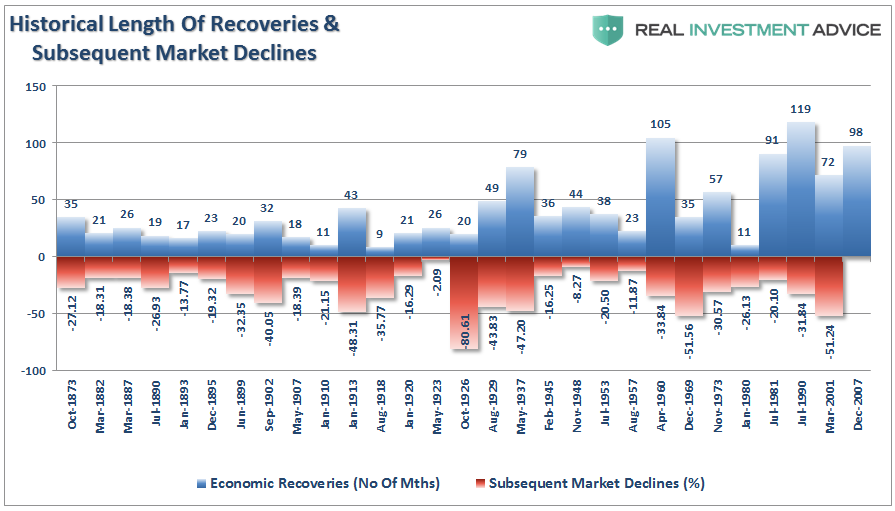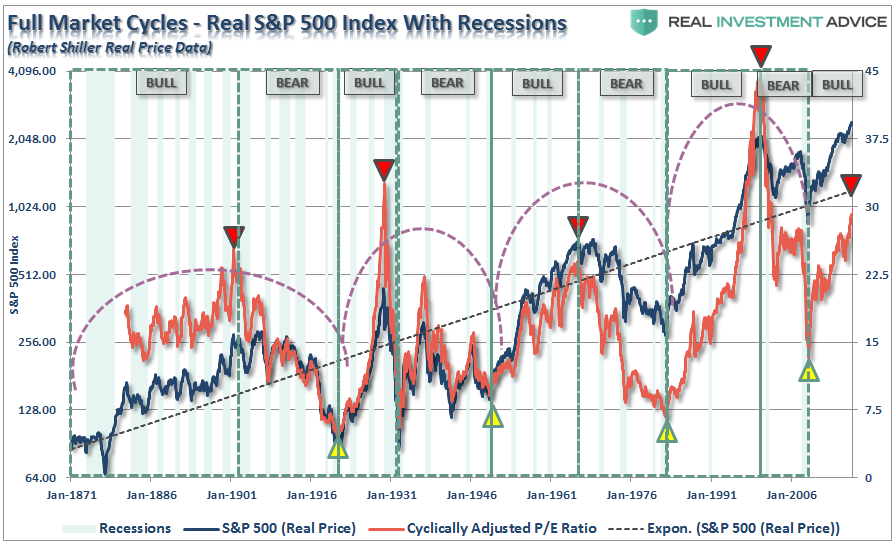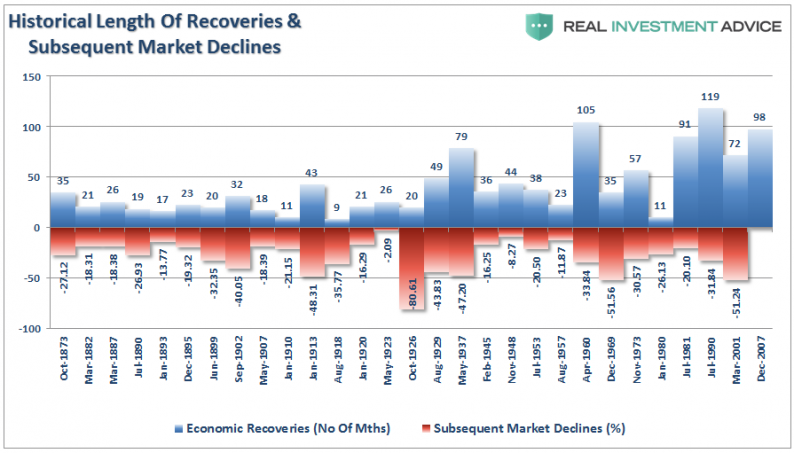“The following is an excerpt from this past weekend’s newsletter. I have several follow up articles coming over the next few weeks that will reference Byron Wien’s comments.”
The Rule Of 20
Byron Wien recently asked the question of where we are in terms of the economy and the market to a group of high-end investors. To wit:
“The one issue that dominated the discussion at all four of the lunches was whether or not we were in the late stages of the business cycle as well as the bull market. This recovery began in June 2009 and the bull market began in March of that year. So we are more than 100 months into the period of equity appreciation and close to that in terms of economic expansion.“

Importantly, it is not just the length of the market and economic expansion that is important to consider. As I explained just recently, the
“full market cycle” will complete itself in due time to the detriment of those who fail to heed history, valuations, and psychology.
“There are two halves of every market cycle. “

“In the end, it does not matter IF you are ‘bullish’ or ‘bearish.’ The reality is that both ‘bulls’ and ‘bears’ are owned by the ‘broken clock’ syndrome during the full-market cycle. However, what is grossly important in achieving long-term investment success is not necessarily being ‘right’ during the first half of the cycle, but by not being ‘wrong’ during the second half.
Will valuations currently pushing the 3rd highest level in history, it is only a function of time before the second-half of the full-market cycle ensues.
That is not a prediction of a crash.
It is just a fact.”
As Wien states, Howard Marks, via Oaktree Capital Management, and arguably one of the most insightful thinkers on Wall Street recently penned a piece discussing the risk to investors. I suggest you read the whole piece, but here is the relevant passage:
“Today’s financial market conditions are easily summed up:There’s a global glut of liquidity, minimal interest in traditional investments, little apparent concern about risk, and skimpy prospective returns everywhere. Thus, as the price for accessing returns that are potentially adequate (but lower than those promised in the past), investors are readily accepting significant risk in the form of heightened leverage, untested derivatives and weak deal structures.The current cycle isn’t unusual in its form, only its extent. There’s little mystery about the ultimate outcome, in my opinion, but at this point in the cycle it’s the optimists who look best.”









Leave A Comment